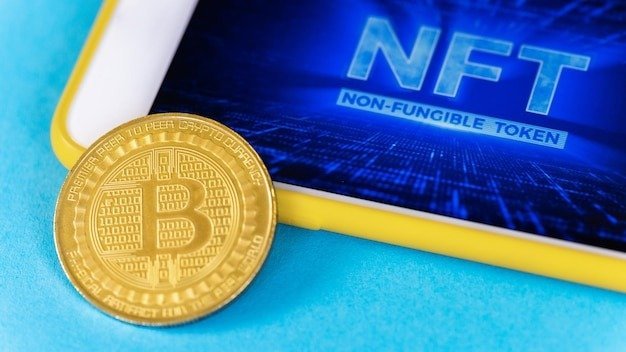Introduction
By News Crypto | Published on 2025
The advent of Non-Fungible Tokens (NFTs) has transformed our understanding of digital ownership, art, and collectibles. While much of the discourse around NFTs has focused on their creation, trading, and ownership, a new layer of engagement is emerging: staking. This practice not only offers potential financial rewards but also requires an understanding of related concepts such as forks, halvings, and the broader connection to fiat currencies. In this article, we will explore the intricacies of staking NFTs and its implications in the ever-evolving landscape of cryptocurrencies.
Understanding Staking
Staking involves locking up a certain amount of a digital asset to support a blockchain network’s operations, typically in return for rewards. While it is most commonly associated with cryptocurrencies, NFTs are now being integrated into staking protocols. Staking NFTs can yield rewards in various forms, including additional tokens or exclusive privileges within a digital ecosystem.
The Mechanics of Staking NFTs
When staking NFTs, users often deposit their tokens into a smart contract. These contracts can vary widely in terms of the rewards they offer, the duration of the staking period, and the specific conditions under which rewards are distributed. Unlike traditional staking models where the user stakes fungible tokens, NFT staking introduces complexities due to the unique nature of each token.
For instance, the rarity or utility of an NFT can influence the staking rewards. Higher rarity may yield better rewards, whereas NFTs with specific functionalities (like those tied to a game) might offer more utility in terms of in-game advantages. This unique valuation model adds an additional layer of strategy for NFT holders considering staking.
Forks and Their Impact on NFT Staking
In the cryptocurrency realm, a fork occurs when a blockchain splits into two separate chains, often due to a disagreement within the community regarding protocol changes or governance. There are two main types of forks: soft forks and hard forks. A soft fork is backward-compatible, while a hard fork is not and creates a new coin.
For NFT holders, forks can have significant implications. If a blockchain network that supports NFTs undergoes a hard fork, NFT holders may find themselves owning assets on both chains. This dual ownership can complicate staking strategies, as users must decide where to stake their NFTs and how the potential rewards may vary between chains.
Moreover, the introduction of new tokens from a fork can dilute the value of existing NFTs, necessitating a reevaluation of their staking potential. As such, NFT holders must stay informed about their blockchain’s governance decisions and potential forks that could impact their assets.
Halvings: A Critical Concept in Crypto
Halving refers to the process of reducing the rewards for mining or staking a cryptocurrency by half, which is often built into the code of the blockchain to control inflation. Bitcoin, for example, undergoes halving approximately every four years, which has historically led to significant price increases.
In the context of NFT staking, halvings can affect the overall ecosystem and its economic model. If staking rewards are halved, NFT holders may need to reevaluate their staking strategies and the potential return on investment. This reevaluation can lead to increased competition among stakers, as users may rush to maximize their returns before the halving occurs. Understanding these dynamics is crucial for NFT holders, as timing and market conditions can greatly influence profitability.
The Fiat Connection
While much of the NFT ecosystem operates within the confines of the crypto world, the connection to fiat currencies cannot be overlooked. Many users still prefer to evaluate their NFT assets in terms of traditional currencies. As staking rewards are often paid in cryptocurrency, the value of these rewards can fluctuate significantly against fiat currencies.
Furthermore, the ability to convert staking rewards into fiat currency can influence the decision-making process for NFT holders. The volatility of crypto markets can result in substantial gains or losses when these rewards are liquidated into fiat. Therefore, understanding market trends, regulatory developments, and economic conditions is essential for NFT stakers.
Conclusion
Staking NFTs presents an innovative avenue for maximizing the value of digital assets, but it comes with its own set of complexities. Navigating forks, halvings, and the fiat connection requires a solid understanding of the underlying technology and market dynamics. As the NFT landscape continues to evolve, stakeholders must remain vigilant and adaptable, ensuring they are equipped to make informed decisions about staking and leveraging their NFTs for potential rewards.


